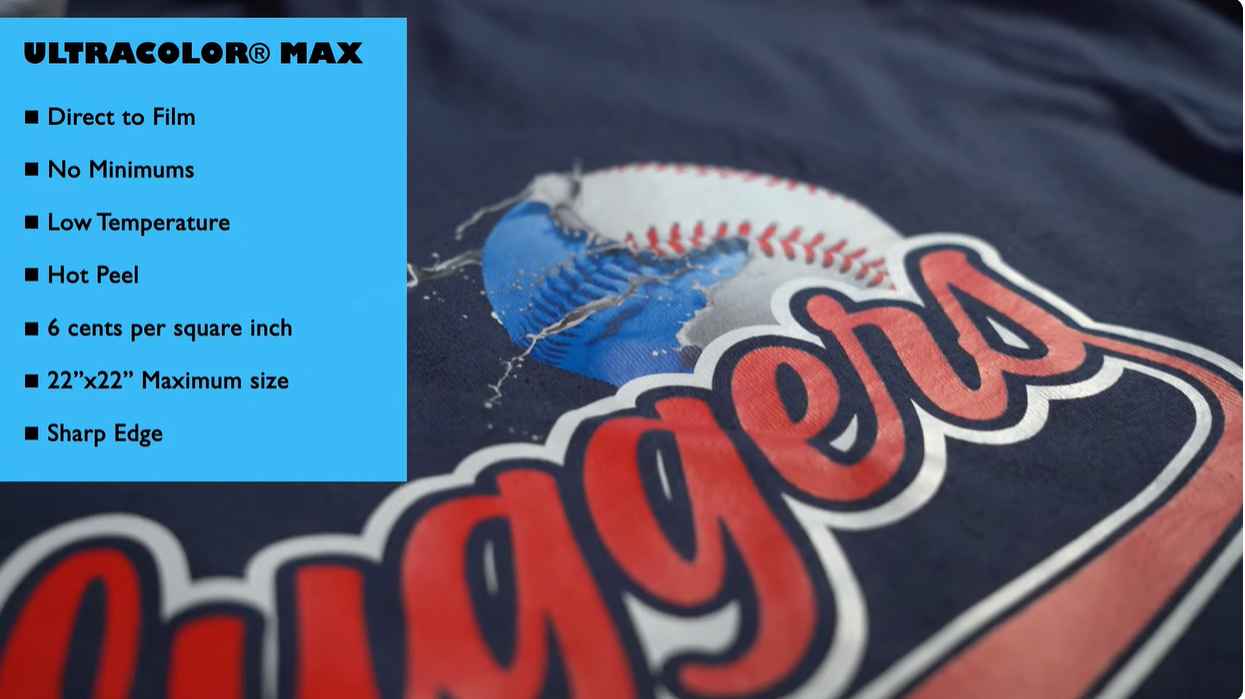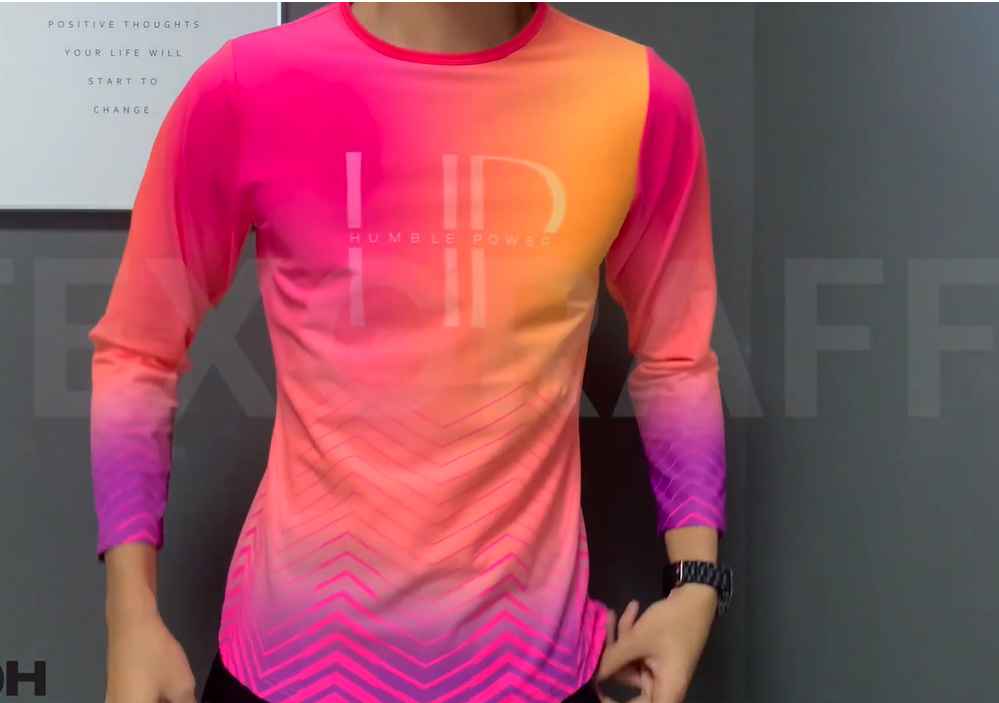Yes, you can sublimate on spandex, but the fabric must contain a high percentage of polyester. Sublimation on spandex requires the material to be blended with polyester to adhere properly.
Sublimation printing is increasingly popular for its vivid, durable results, especially on apparel. Spandex, known for its elasticity, is a desirable fabric in the sports and fashion industries. For successful sublimation, the spandex blend should be at least 60-70% polyester, as it’s the polyester fibers that absorb the ink.
Pure spandex won’t hold the sublimation dye, leading to faded or nonexistent prints. It’s crucial to use a heat press correctly set for time and temperature to optimize ink transfer and retention. The unique blend of spandex and polyester creates an ideal canvas for vibrant, stretchable designs that last, making it perfect for sportswear, swimwear, and other stretchy garments.
The Basics Of Sublimation

The Basics of Sublimation open a world of vibrant and lasting prints for various items, especially clothing. Understanding how this process works helps you choose the right materials. Let’s explore if you can use spandex for sublimation printing.
What Is Sublimation?
Sublimation is a printing technique. It turns solid dye into gas with heat. Then, it becomes part of the fabric. It creates long-lasting, bright images. This method is popular for customizing apparel and accessories.
Suitable Fabrics For Sublimation
Not all fabrics work for sublimation. The fabric must have polyester or a similar synthetic. This is because the dye sticks to synthetic fibers when heated. Natural fibers like cotton do not work as well. Here is a list of suitable fabrics:
- Polyester – Ideal for vibrant prints
- Mixes with high polyester content – Also suitable
- Blends – Must have at least 50% polyester.
Can spandex be used? Yes, but it should be blended with polyester. Pure spandex may not hold the print well.
Sublimation On Spandex
Spandex is known for stretchiness. This is good for activewear. For sublimation, use spandex with polyester. A high polyester content in the blend gives the best results. The table below shows blends and their suitability.
| Fabric Blend | Suitability for Sublimation |
|---|---|
| 100% Polyester | Excellent |
| Polyester-Spandex Mix | Good (if polyester > 50%) |
| 100% Spandex | Not suitable |
Spandex’s Composition And Features

Spandex’s Composition and Features play a pivotal role in its ability to stretch and recover. Known for its exceptional elasticity, spandex is the go-to fabric for activewear and performance garments. It’s durable, lightweight, and comfortable, making it a favorite in the fashion industry. Let’s delve into what makes spandex such a unique material.
The Structure Of Spandex
At the heart of spandex is its distinct structure. Spandex fibers are made of a long-chain polymer called polyurethane, which is responsible for the material’s stretch. The fibers can expand over 500% without breaking.
This is why spandex can accommodate various body shapes comfortably. Knowing this helps us understand spandex’s capabilities and limitations when it comes to sublimation printing.
Why Spandex Is Different
What sets spandex apart from other textiles?
- High elasticity: It snaps back into shape after stretching.
- Strength: Despite being stretchy, it’s strong and durable.
- Moldable: It contours to the body, ensuring a snug fit.
- Moisture-wicking: Spandex is often blended with other materials to keep skin dry.
These features make spandex ideal for sports and everyday comfort. They also pose unique challenges for sublimation, which we must consider to achieve vibrant, lasting prints.
Sublimating On Spandex: Possibilities And Limitations
Spandex, known for its super stretch, is a favorite in sportswear and costumes. But can you add personalized designs through sublimation? This part of the blog explores the opportunities and hurdles presented when sublimating on spandex.

The Viability Of Sublimation On Spandex
Can spandex handle the heat and pressure of sublimation? It’s a mix of science and art. Sublimation works best with polyester. Spandex can contain polyester, which is good news. Here’s what you need to know:
- Heat Sensitivity: Spandex can melt or warp if too hot. Find the right temperature balance.
- Polyester Content: More polyester means better color capture. Aim for high polyester blends.
- Stretch Consideration: Remember, spandex stretches. Ensure designs accommodate expansion.
Challenges With Spandex Sublimation
Perfecting sublimation on spandex can be tricky. Pay attention to these common challenges:
| Challenge | Details |
|---|---|
| Heat Sensitivity: | Too much heat can ruin spandex. Always test a small area first. |
| Color Fidelity: | Colors may change when fabric stretches. Select designs that adapt well. |
| Printing Pressure: | Pressure must be even. Spandex can bunch up or distort. |
Spandex sublimation needs practice. Keep these points in mind for the best results. With patience, you’ll create beautiful, customized spandex pieces.
Preparing Spandex For Sublimation
Embarking on the journey of sublimating spandex can unleash a world of vibrant prints and designs. Ensuring your spandex fabric is ready for sublimation is crucial for high-quality results. Getting your spandex prepared correctly will help the dye bond properly, resulting in impressive, long-lasting graphics.
Pre-treatment Processes
Pre-treating spandex is a pivotal step before the sublimation process begins. This stage enhances the fabric’s ability to take on vivid colors and sharp visuals. Let’s explore the essential pre-treatment processes:
- Clean the fabric to eliminate oils, dirt, or residues.
- Apply a sublimation-specific pre-treatment solution if necessary.
- Let the pre-treatment dry thoroughly before proceeding.
- Ensure a smooth and even surface to avoid imperfections.
Tips For Optimal Heat Pressing
Heat pressing is where the magic happens in sublimation. Proper technique will ensure your spandex material comes out looking stellar:
- Use a heat press that provides consistent temperature and pressure.
- Preheat the press to the correct temperature for spandex, typically around 385°F (195°C).
- Time is key. Press for 30 to 60 seconds based on the fabric thickness.
- Protect the fabric with a Teflon sheet or parchment paper.
- Test your settings first on a small sample to prevent mistakes.
Each step you take to prepare your spandex for sublimation enhances the outcome of your final product. Focus on clean, even pre-treatment and precise heat pressing for sublimation success. With these tips, vivid and lasting prints on spandex are within your reach.
Inks And Transfer Papers For Spandex
Sublimation printing on spandex blends style with high-tech performance. This requires suitable inks and transfer papers. These adapt to the fabric’s elasticity. The correct match ensures vibrant, long-lasting prints. Let’s explore the best choices for sublimation on spandex.
Selecting The Right Sublimation Inks
Sublimation inks are key for printing on spandex. Pick high-quality, compatible inks. They bond well and stand out on flexible fabrics. Look for inks specifically formulated for spandex. Check your printer’s compatibility too.
- Vibrant Colors: Inks should provide bright, true colors.
- Stretch Resistance: Inks must not crack on stretching.
- Fade Resistance: Inks should be UV resistant to prevent fading.
The Best Transfer Papers For Stretch Fabrics
Transfer papers play a crucial role. They must handle spandex’s stretch. Quality transfer papers maintain image clarity when stretched. They also transfer inks efficiently.
| Paper Type | Benefits |
|---|---|
| Lightweight Paper | Better for stretch fabrics; blends well. |
| Elastic Transfer Sheets | Designed for high elasticity; no cracking. |
Practical Tips For Successful Sublimation On Spandex
Want to add vibrant designs to your spandex gear? Sublimation printing is a game-changer. But, without the right techniques, it can be tricky. Here are some surefire tips to nail it.
Temperature And Time Settings
Finding the perfect balance is key. Spandex is sensitive to heat. Use moderate temperatures and quick transfers to avoid damage. The ideal setting varies, but here’s a sure start:
- Temperature: 385° F (195° C)
- Time: 30 seconds
Always test with sample fabric first. Check the final result to tweak the settings.
Maintaining Fabric Stretch And Recovery
Retaining the stretch of spandex is crucial. Here’s how to keep it in top form:
- Pre-stretch before sublimating. This prevents distorted designs post-stretch.
- Choose the right sublimation paper. Use elastic types that move with the fabric.
- Ensure even pressure in the heat press. This guarantees consistent results.
Test. Tweak. Triumph. Your spandex will thank you with stunning, stretchy designs.
Creative Projects With Sublimated Spandex
Spandex, known for its elasticity, transforms with sublimation into a canvas for art. This process infuses designs directly into the fabric. It creates vivid and durable prints. The possibilities for creative projects are endless. From apparel to accessories, sublimated spandex can make items stand out with personalized flair.
Innovative Uses In Apparel
Sublimated spandex takes fashion to new heights with bold prints. It is perfect for sportswear. You can find custom leggings, swimsuits, and gymnastics leotards. This tech makes patterns that won’t peel or fade.
- Swimwear: Swimwear benefits from sublimation’s ability to resist chlorine and saltwater.
- Athleisure: Everyday outfits come alive with unique, bold designs.
- Performance Gear: Athletes can enjoy custom team uniforms that enhance team spirit.
Sublimated Spandex For Accessories
Accessories are not left behind in the sublimation trend. They gain a touch of personality with sublimated spandex. Stretchy headbands or even durable phone cases are possible.
- Headbands: A staple for athletes or a fashion statement for daily wear.
- Cosmetic Bags: A mix of utility and style, they’re a hit at any event.
- Phone Cases: These accessories stand out with custom, vibrant prints.
Frequently Asked Questions On Can You Sublimate On Spandex
What Temperature Do You Sublimate Spandex?
Sublimate spandex at a temperature ranging between 155°C to 160°C (311°F to 320°F). Always ensure correct heat settings for optimal results.
What Materials Can You Not Sublimate On?
You cannot sublimate on 100% cotton, non-coated metals, wood, and non-polyester fabrics. Materials lacking a special polymer coating also resist sublimation.
At What Temperature Does Spandex Melt?
Spandex begins to melt at temperatures around 250 degrees Celsius (482 degrees Fahrenheit). Always avoid high heat to maintain fabric integrity.
Can You Sublimate On 95 Polyester 5 Spandex T-shirts?
Yes, you can sublimate on 95% polyester 5% spandex t-shirts, as the high polyester content is suitable for sublimation printing.
Conclusion
Exploring the versatility of spandex in sublimation printing can be transformative for your custom apparel projects. Keep material blend, heat settings, and ink choice in mind. For successful outcomes, experiment and practice. Your vibrant, stretchable designs await – happy sublimating!

